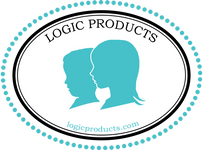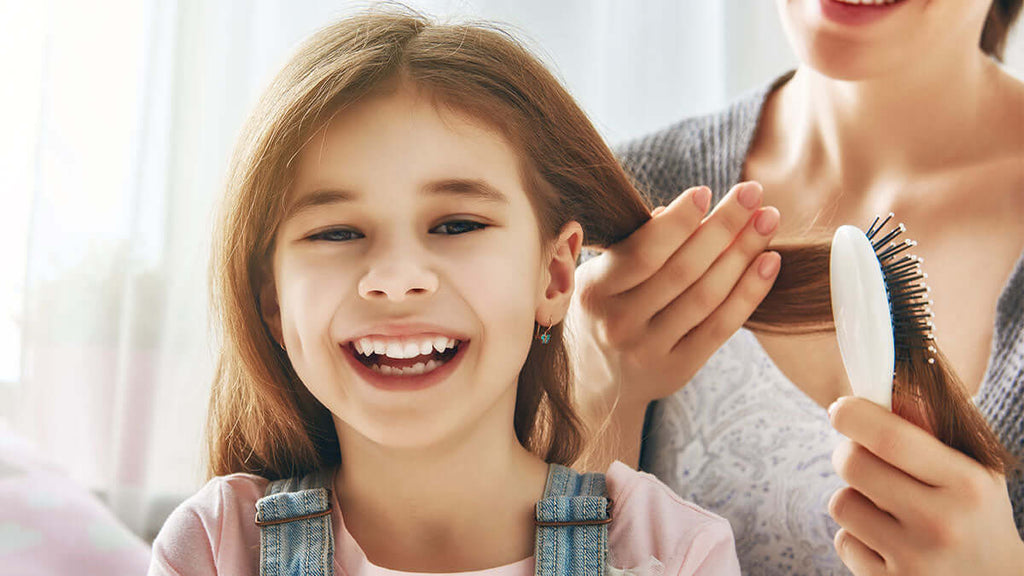Many parents do not realize their kids have a head lice infestation until it becomes severe. That is because only some people experience an itchy scalp and feel a crawling or tickling sensation on their head when they have lice.
So, it is surprisingly very common to have no idea your child is carrying around a large living and breathing lice colony on their head! In fact, this happens to unsuspecting moms and dads all the time, especially those parents who are new to the headache of headlice. They are surprised and amazed they did not notice the lice and lice eggs (which are called nits), on their children sooner, and they suddenly find themselves in a race against time to treat and get rid of lice. This is because lice multiply exponentially and quickly and will not go away on their own. Also, head lice are easily spread to other family members and close contacts, including siblings, moms, dads, caregivers, friends and classmates, so time is always of the essence.
HERE ARE SOME GENERAL TIPS TO GUAGE HOW LONG YOUR CHILD HAS BEEN INFESTED WITH LICE:
If you find just a few nits and one louse: Less than 2 weeks. If you only find one living louse and a few eggs on the hair closest to the scalp, most likely a pregnant adult louse crawled onto the head and started to lay approximately 6 to 10 lice eggs a day. These nits took about 6-7 days to mature and hatch, (but could be slightly longer by a day or two). So, it’s likely that you’ve caught lice in the earlier stages and had them for less than 2 weeks.
- If you find mostly nits and baby lice, which are also called nymphs: 1.5 to 2 weeks. If you see nits and small moving lice, you’ve likely had lice for 1.5 to 2 weeks. This is because you aren’t seeing a lot of adult lice but are still seeing tiny freshly hatched nymphs.
- If you find generations of head lice, meaning different sizes including nits, nymphs, and adult lice: 2 weeks or longer. If you’re seeing different sizes of lice, you are looking at a lice infestation of at least 2 weeks, but more than likely 4 – 6 weeks, or possibly longer.
If you find nits glued onto the hair shaft ¼ inch or more from the scalp: This is a sign of a long-term infestation. These nits have already hatched into lice and have continued their lice life cycle on the head, closer to the scalp. These nit-casings are empty lice egg sacs and are still attached to the hair strand because female lice glue their eggs onto the hair shaft with a sticky, waterproof substance their bodies naturally secrete, called “nit glue”. Nits and nit-casings must be manually removed, as they will not wash away or fall out of the hair on their own. Since nits need the heat of the scalp to incubate and hatch, the further down the hair shaft you find nit casings, the longer the lice infestation has been present.

WHY DOES IT MATTER HOW LONG SOMEONE HAS LICE?
It matters because, the longer the infestation has continued, the more lice and nits there will be to get rid of, the more difficult and time-consuming it will be to treat, and the more it will spread to others. Human head lice multiply exponentially and quickly. The average louse lays anywhere from 50 – 150 eggs during its’ adult lifetime.
It is important to treat head lice as soon as you discover it: Stopping the spread and life-cycle of lice on the human hosts hair and scalp can only be done with effective lice removal and treatment. We recommend using our LiceLogic Clear & Free Shampoo or Mousse and LiceLogic Clear & Free Eliminator Nit comb for safe and non-toxic lice elimination.
Lice will not go away on their own: Treat Lice right away to stop the growth and spread of head lice infestation and eliminate it spreading to others – both in the home and at school.
Multiple head lice treatments should be done every 2 – 3 days until you are lice free: Continue to do lice treatments until all the lice are gone. Also continue to inspect the scalp and hair closest to the scalp for nymphs and nits.
Continue to do a regular head-lice check for the next 10-14 days: Ensure all lice are gone for good by checking every member of the family. Use a good lice comb with stainless steel teeth that are close together and will not bend out of place, and run it through small sections of the hair, from root to tip, in one continuous motion. Inspect the nit comb under bright light to check for lice, nymphs and nits. Wipe the nit comb on a damp white paper towel to make it easier to see any lice and nits embedded on the lice comb.
Notify the school and close contacts: When you discover your school age child has a case of lice, please notify their teacher so they can alert other parents. Schools typically handle this professionally and confidentially and do not disclose the name of the child who has lice. It is very helpful in stopping the spread of lice, since head lice tends to cycle through classrooms and social groups, including camps and sporting teams.
Consider using daily lice prevention products to avoid getting lice again: there are things that can be done so you do not get lice and super lice again. Use lice repelling products because they are scientifically proven to keep lice away. LiceLogic’s lice repel products have been independently tested by a leading lice expert and were shown to be highly effective for safe and non-toxic lice prevention. When all 3 LiceLogic Repel products were used together, our LiceLogic Repel Shampoo, Repel Spray, and Repel Conditioner they were shown to be 99% effective at repelling lice up to 24 hours. Available in two child-friendly and refreshing scents - Rosemary Mint or Lavender. If you need to treat lice, use our LiceLogic Clear & Free Family Sized Kit, which is in refreshing Peppermint scent and safe for daily use.








